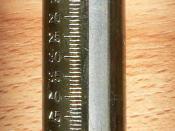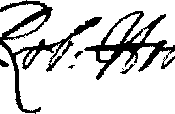Key Stage 3 Science Investigation.
Investigating Hookes Law
Aim: The aim of this investigation is to find out the relationship between the extension and force applied up to the point of distortion.
Theory: Robert Hooke discovered a law for all elastic materials in the seventeenth century. Hooke found that a small force stretched a spring a little and that double the force stretched it twice as much. Hookes Law is that the amount the spring stretches by is proportional to the stretching force. The amount the spring stretches is called extension.
Many materials obey a simple law when compressed or stretched. Just like a spring
The spring is stretched in stages by hanging masses from one end. The stretching force is called Load.
As g = 10N/kg, there is a 1N load for every 100g hung from the spring.
Each time the load is changed, the extension of the spring is measured.
The extension is the difference between the stretched length of the spring and its original unstretched length.
Engineers use a number called the spring constant to describe how springy a spring is. The spring constant is the size of the force that stretches by one centimetre.
Hookes Law -
ExtensionStretching Force.
Force = spring constant x extension.
F = KX
F = stretching force. K = Spring Constant. X = Extension.
Example that was tested.
You have a 30cm long spring. Its spring constant is 2N/cm. You stretch it until it is 40cm long. How much force do you use?
The extension is 40-30 = 10cm
FormulaF= KX
F= 2 x 10
T= 20N.
Variables: During the investigation there could be many variables. Some include,
The weights and how it effects the expansion of the spring,
Type/material of spring,
The point where the extension is measured,
Amount of...


